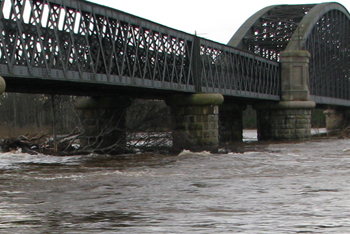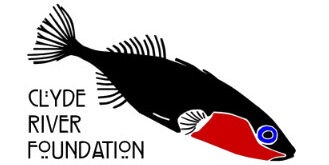UDN reported from River Spey
 Following the diagnosis of UDN on one salmon in the River Spey, this advice has been circulated by the Association of Salmon Fishery Boards:
Following the diagnosis of UDN on one salmon in the River Spey, this advice has been circulated by the Association of Salmon Fishery Boards:
UDN has been diagnosed by Marine Scotland Science on one salmon in the River Spey. Further advice is now being sought from a range of expert opinion. Monitoring is now being extended to other rivers with the intention of sampling fish with symptoms that are consistent with UDN, prior to the onset of colonisation by the freshwater fungus Saprolegnia (whose spores are always present), for further investigations. To date there is no evidence that it is widespread and instances may well prove to be isolated. It is possible that UDN is endemic in wild salmon populations but generally at such low levels that it attracts little attention.
There was no evidence in the late 1960s and early 1970s, when it was common in most rivers, that it impacted on salmon populations, although salmon are now much less abundant than they were then. The evidence from that period is that affected fish can recover and spawn successfully. Eggs from affected fish hatched normally, and there is no evidence that salmon fry or parr can be impacted.
UDN is not an officially notifiable disease and there is inconsistency in scientific literature regarding its status; although often called a “disease” this is disputed by many as no bacteria or virus or other causative agent for it has ever been conclusively identified. The alternative theory is that it starts as a skin “condition” initiated by some unknown environmental factor or factors in the sea which subsequently allows infection by other freshwater organisms. In the late 1960s, attempts to transmit UDN from sick to healthy fish gave no clear or consistent results.
“UDN” is therefore the description of the symptoms, not the name of a causative agent, and stands for Ulcerative Dermal Necrosis (= death of skin, with ulcers). Fish come in from the sea with ulcers (what triggers the condition in fish out at sea is unknown), typically on the head but also on other areas of their bodies that lack scales, and the bare flesh can then be attacked by the freshwater fungus Saprolegnia. In the past it was most prevalent in cold water temperatures and the ulcers can heal as the water warms up in summer, allowing complete recovery. However, if the fungus infection takes hold and extends the area of skin damage, the fish’s ability to control the movement of water and salts in and out of its body is lost, leading to the fish’s death. UDN is not the cause of death; the effects of secondary infestation by fungus and other organisms is responsible.
Bio-security on some rivers – notably the Spey (on the advice of Marine Science Scotland) and the Aberdeenshire Dee – is being increased as a precautionary measure with the introduction of disinfection facilities for anglers’ equipment and fishing beat landing nets.
For further information please contact:
Dr Alan Wells, ASFB Policy and Planning Director
